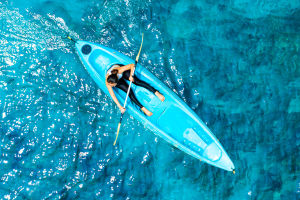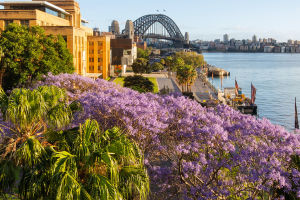Lykkers, for those who dream of surreal horizons, shifting landscapes, and untouched corners of the world, the Flaming Cliffs of Bayanzag in Mongolia offer one of the most fascinating adventures.
Hidden deep within the Gobi Desert, this iconic destination is more than just red rock formations—it's a window into prehistoric times and a testament to the raw beauty of nature.
Where Bayanzag Is and How to Get There
Location:
Bayanzag is located in the Ömnögovi Province in southern Mongolia, right in the heart of the Gobi Desert. It lies around 100 kilometers northwest of the city of Dalanzadgad, the provincial capital.
How to Reach It:
The easiest way to get there is by flying from Ulaanbaatar to Dalanzadgad (a 90-minute domestic flight), then continuing by 4x4 vehicle for approximately two hours. Roads are mostly unpaved, but the journey offers unforgettable views of the open steppe and desert terrain.
What to Expect at Bayanzag
Flaming Cliffs:
The area is best known for its vivid red sandstone cliffs, which appear to glow at sunset—earning the nickname "Flaming Cliffs." These cliffs were named by American explorer Roy Chapman Andrews, who led groundbreaking excavations here in the 1920s.
Dinosaur Fossils:
Bayanzag is one of the world's most important paleontological sites. It was here that the first dinosaur eggs were ever discovered. While most fossils are now preserved in museums, you can still explore the landscape where many were originally unearthed.
Natural Scenery:
Expect dramatic sandstone formations, endless desert views, and unique wildlife like eagles and small desert rodents. There are marked walking trails that allow visitors to safely explore the cliffs.
Things to See and Do
Panoramic Walks:
There is a main walking trail that begins behind a small market area, leading to panoramic viewpoints perfect for photography. The trail allows access to the lower sections of the cliffs for closer exploration.
Wildlife Watching:
The area is home to steppe animals and desert birds. Bring binoculars to spot falcons, vultures, and other creatures that nest among the rocks.
Sunset Viewing:
For many, the best time to visit is late afternoon. As the sun dips, the cliffs light up in hues of orange and crimson, creating a spectacular, Mars-like landscape.
Opening Hours and Ticket Info
Opening Hours:
The site is open year-round and does not have strict opening or closing hours. However, it's best visited during daylight (from 9 AM to 6 PM) to make the most of the scenery and safety.
Ticket Cost:
There is no official entrance fee, but some local guides and camps may include a small site maintenance contribution in their overall tour prices, usually around $2–$5 USD.
Accommodation Nearby
Ger Camps:
Accommodation is primarily in traditional Mongolian yurts, known as 'gers,' some of which offer private bathrooms and hot water.
Comfort and Facilities:
While basic camps offer simple bedding and shared bathrooms, upgraded options include electricity, showers, and even local-style dining with panoramic desert views.
Average Nightly Cost:
Prices range from $25–$40 USD for standard gers to $80–$120 USD per night for luxury camps with private bathrooms and meals included.
Food and Supplies
Local Meals:
Meals often include vegetable soups, steamed dumplings, mashed potatoes, and grilled chicken or lamb. Vegetarian options can be arranged in advance at most camps.
Shops and Stops:
The small town of Bulgan nearby offers basic supply stops, small markets, and limited services like fuel stations and vehicle repairs.
Best Time to Visit
Climate:
The ideal months are from May to September, when temperatures are milder and the desert is most accessible. Summers are warm and dry, while spring and early autumn bring cool nights and clear skies.
Night Skies:
Bayanzag offers some of the clearest stargazing in the world. Expect breathtaking views of the Milky Way and meteor showers in the right season.
In Summary
Bayanzag is not just a destination—it's an experience of silence, space, and prehistoric mystery. For Lykkers ready to leave the paved roads behind and dive into the beauty of Mongolia's Gobi Desert, the Flaming Cliffs promise wonder at every turn. Whether it's for the fossils, the landscapes, or the peaceful nights under the stars, this is a journey that stays with you long after the tracks in the sand have faded.


